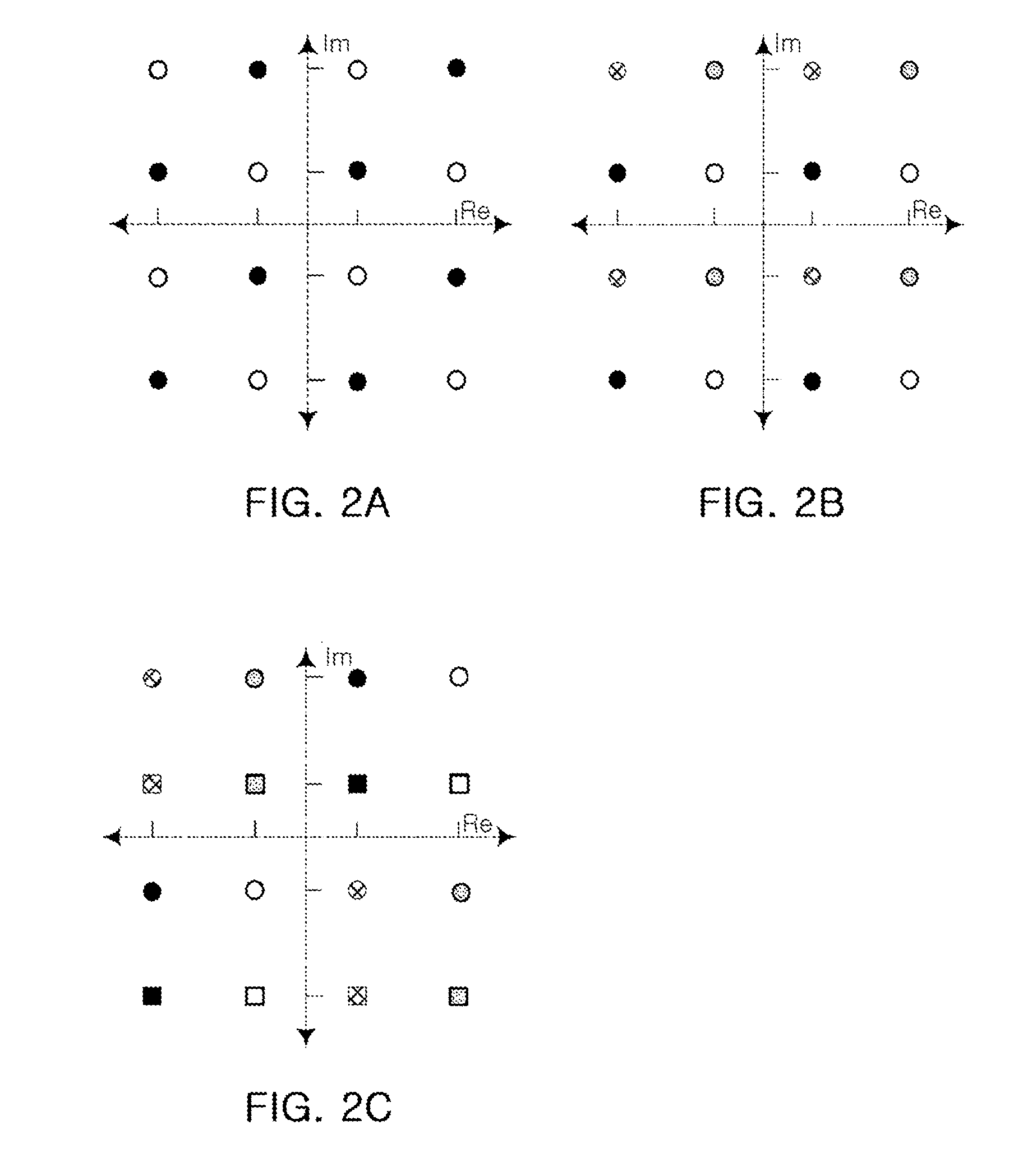Adaptive qrd-m algorithm based signal detecting method by using constellation set grouping in spatial multiplexing multiple-input multiple-output system
- Summary
- Abstract
- Description
- Claims
- Application Information
AI Technical Summary
Benefits of technology
Problems solved by technology
Method used
Image
Examples
Embodiment Construction
[0028]Exemplary embodiments will now be described in detail with reference to the accompanying drawings so that they can be easily practiced by a person skilled in the art to which the present invention pertains. However, in describing the exemplary embodiments of the present invention, detailed descriptions of well-known functions or constructions are omitted so as not to obscure the description of the present invention with unnecessary detail. In addition, like reference numerals denote parts performing similar functions and actions throughout the drawings.
[0029]Throughout this specification, when it is described that an element is “connected” to another element, the element may be “directly connected” to another element or “indirectly connected” to another element through a third element. In addition, unless explicitly described otherwise, “comprising” any components will be understood to imply the inclusion of other components but not the exclusion of any other components.
[0030]...
PUM
 Login to View More
Login to View More Abstract
Description
Claims
Application Information
 Login to View More
Login to View More - R&D
- Intellectual Property
- Life Sciences
- Materials
- Tech Scout
- Unparalleled Data Quality
- Higher Quality Content
- 60% Fewer Hallucinations
Browse by: Latest US Patents, China's latest patents, Technical Efficacy Thesaurus, Application Domain, Technology Topic, Popular Technical Reports.
© 2025 PatSnap. All rights reserved.Legal|Privacy policy|Modern Slavery Act Transparency Statement|Sitemap|About US| Contact US: help@patsnap.com



